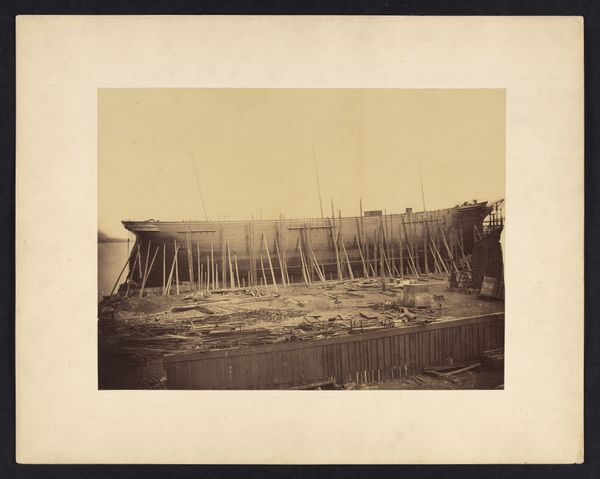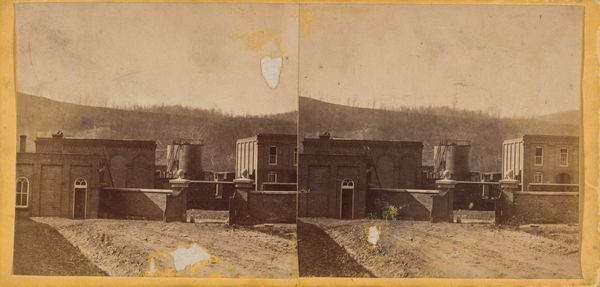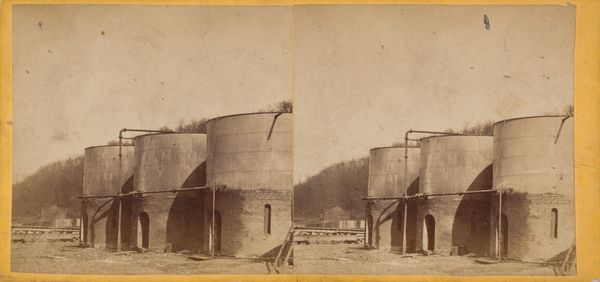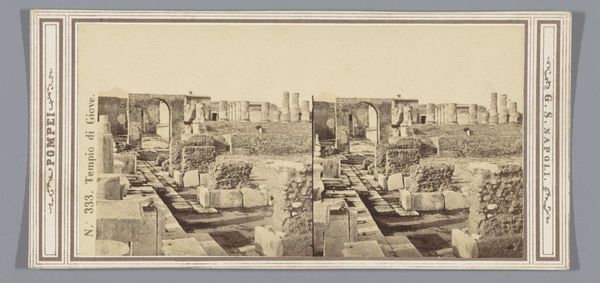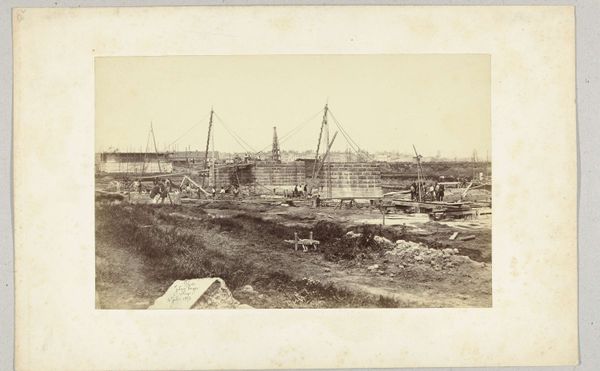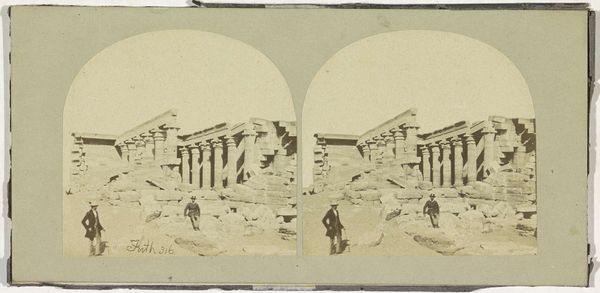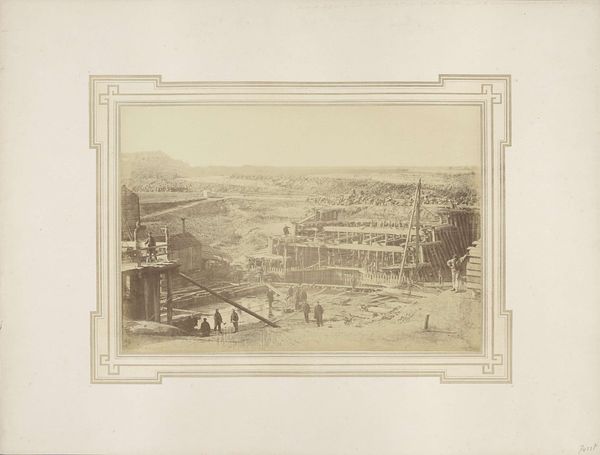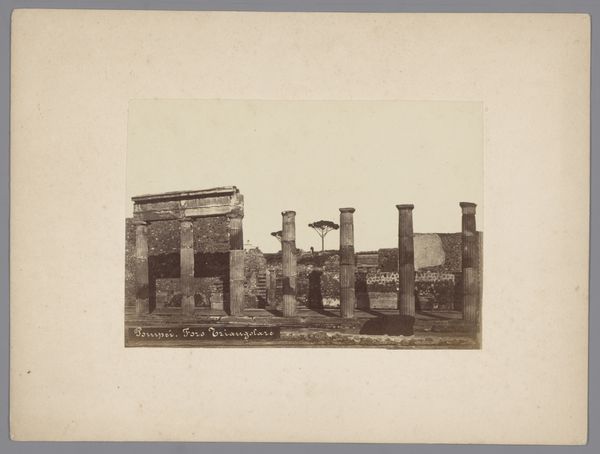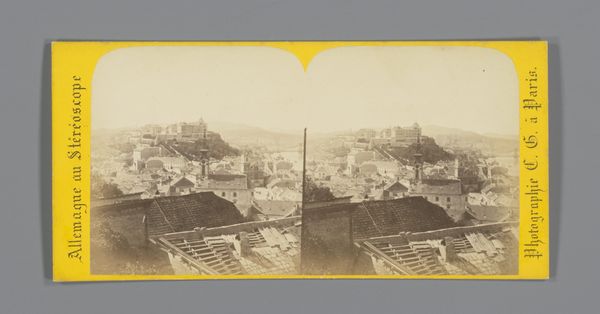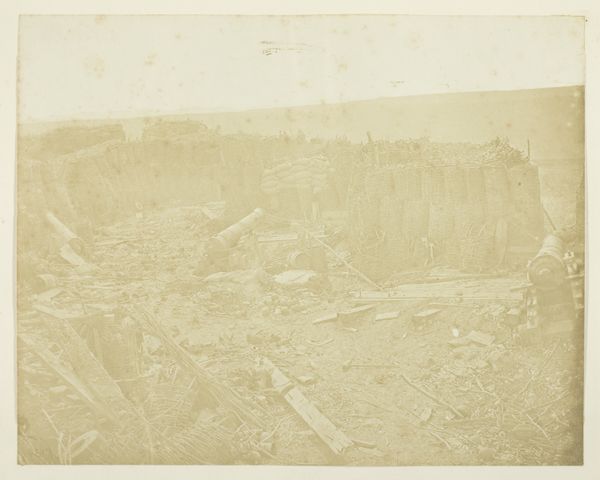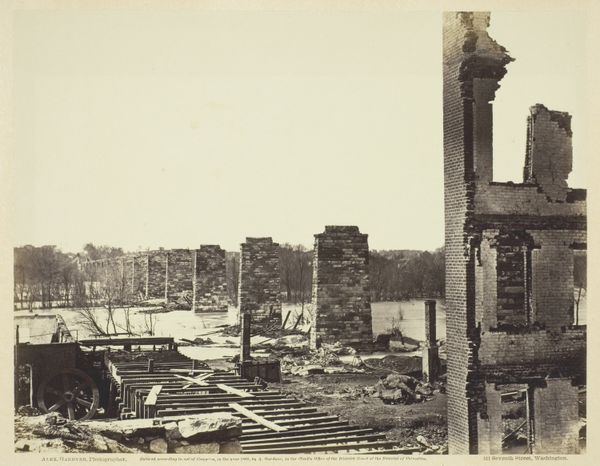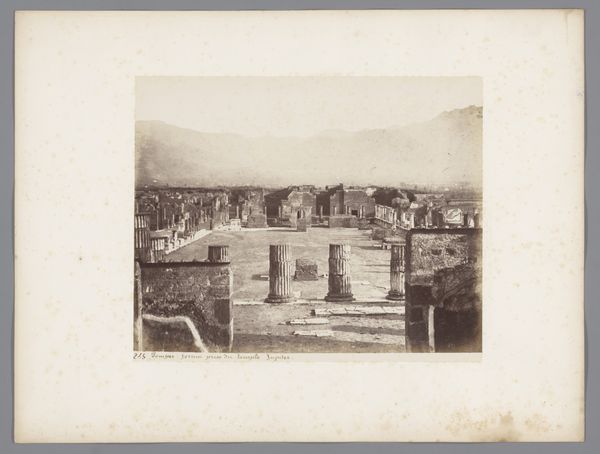
Back of Stills, Clark & Sumner, Standard Petroleum Refinery, Pittsburg, Pennsylvania c. 1865
0:00
0:00
photography, albumen-print
#
photography
#
albumen-print
Dimensions: image/sheet: 7.7 × 8 cm (3 1/16 × 3 1/8 in.) image/sheet: 7.7 × 7.9 cm (3 1/16 × 3 1/8 in.) mount: 8.1 × 17 cm (3 3/16 × 6 11/16 in.)
Copyright: National Gallery of Art: CC0 1.0
Editor: This albumen print, "Back of Stills, Clark & Sumner, Standard Petroleum Refinery, Pittsburg, Pennsylvania," was taken around 1865 by Thomas H. Johnson. It feels very industrial and stark. All those barrels! How would you interpret this work? Curator: This image captures a pivotal moment in American industrial history, doesn't it? Taken shortly after the Civil War, it showcases the burgeoning oil industry. Notice the emphasis on infrastructure and manual labor, signaling the economic shift occurring at that time. How does seeing it as a representation of power dynamics in that era influence your reading of the image? Editor: I hadn't thought about the power aspect so explicitly, but now that you mention it, I see how the sheer scale of the refinery suggests dominance and control, both over the environment and labor. Curator: Exactly. Early photography like this also played a crucial role in shaping public perception of industry and progress. It’s about manufacturing consent. Did it make you wonder if Johnson’s intent was to glorify or simply document? Editor: It makes me wonder, definitely. I guess both are possible. But if this was glorification, the lack of polish, the seeming roughness of the whole set-up, makes it a somewhat complicated kind of glorification. More like ‘look at what we can DO’ more than ‘look at how GREAT we are’. Curator: Interesting take. Remember that the context of display matters, too: how this image was circulated, viewed in stereoscopes, presented at expositions all influenced how audiences perceived these scenes. What do you take away now? Editor: Now I realize there's much more to consider about the public life of a seemingly straightforward industrial photograph like this! It’s not just about the subject, but how that subject interacts with the culture of its time.
Comments
No comments
Be the first to comment and join the conversation on the ultimate creative platform.
